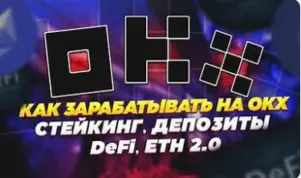DeFi Beginner Guide 2025: Safe Investing
Getting Started with DeFi: Beginner’s Checklist, Top Projects & Safety Tips
DeFi cryptocurrency is pulling in more and more people who want to earn in decentralized finance. But if you’re new, where do you start, which platforms are safe, and how do you protect your stack? If you’re still not sure how DeFi works, here’s the rundown.
This guide gives you a simple beginner’s checklist, the most trusted DeFi projects for 2025, and safety rules to avoid getting rekt in the Wild West of Web3.

Beginner’s DeFi Checklist: 5 Steps to Start
- Learn the basics. Understand what DeFi crypto is: protocols, tokens, liquidity farming, and staking. Knowledge first, aping later.
- Set up a wallet. The go-to choice is MetaMask. Install it on browser or mobile, and guard your seed phrase like it’s Fort Knox.
- Fund your wallet. Buy Ethereum (ETH) or other crypto on a major exchange (Binance, OKX), then transfer to your wallet.
- Pick a legit DeFi platform. Start with trusted names: Uniswap, Aave, Curve Finance. Avoid sketchy clones promising 1000% APY.
- Start small. Only risk what you’re ready to lose. Begin with swaps or staking. Once comfy, explore farming or governance tokens.
Trusted crypto exchanges for on-ramping:
WhiteBIT |
Binance |
YoBit |
CEX.IO |
Bybit

Top DeFi Projects for Beginners
- Uniswap: The OG decentralized exchange (DEX). Easy swaps, high liquidity, trusted brand.
- Aave: Borrow, lend, and earn yield. Great for exploring lending protocols.
- Curve Finance: Specializes in stablecoin swaps with ultra-low fees. Safer entry point for risk-averse users.
- Compound: Earn passive yield by depositing assets. Simple and beginner-friendly.
- PancakeSwap: BSC’s answer to Uniswap, with cheaper gas fees and plenty of liquidity pools.
Quick Safety Tips for DeFi Newbies
- Never share your seed phrase — not with friends, not with “support.”
- Verify URLs. Always double-check official project links.
- Diversify. Don’t put all your ETH in one farm.
- Use hardware wallets (Ledger, Trezor) for larger bags.
- Stay updated. Keep your wallet and browser patched.
Comparing DeFi Platforms
| Platform | Main Use | Pros | Cons |
|---|---|---|---|
| Uniswap | DEX for token swaps | High liquidity, simple UI | Gas fees can be brutal on ETH |
| Aave | Lending & borrowing | Trusted protocol, multiple assets | Smart contract risks |
| Curve Finance | Stablecoin swaps | Low slippage, low fees | Niche use case |
| Compound | Earn yield on deposits | Beginner-friendly, transparent | APY not always high |
| PancakeSwap | BSC-based DEX | Cheap fees, wide access | BSC security concerns |
Conclusion
Getting into DeFi isn’t rocket science — it’s about taking baby steps, protecting your wallet, and knowing the risks. The opportunities are massive: passive income, staking rewards, governance tokens, and access to the global Web3 economy. But DeFi isn’t a magic ATM — hacks, volatility, and rug pulls are part of the game.
If you want to earn with DeFi in 2025–2026, start small, experiment, and stay informed. The future of decentralized finance is wide open, and early movers could be the ones stacking real gains. Or, well… getting rekt. That’s crypto.
Fun Fact: Back in “DeFi Summer” 2020, yield farming on Compound and Yearn was paying out triple-digit APYs. Most degens aped in, some made it big, but many learned the hard way: not every farm leads to the moon.